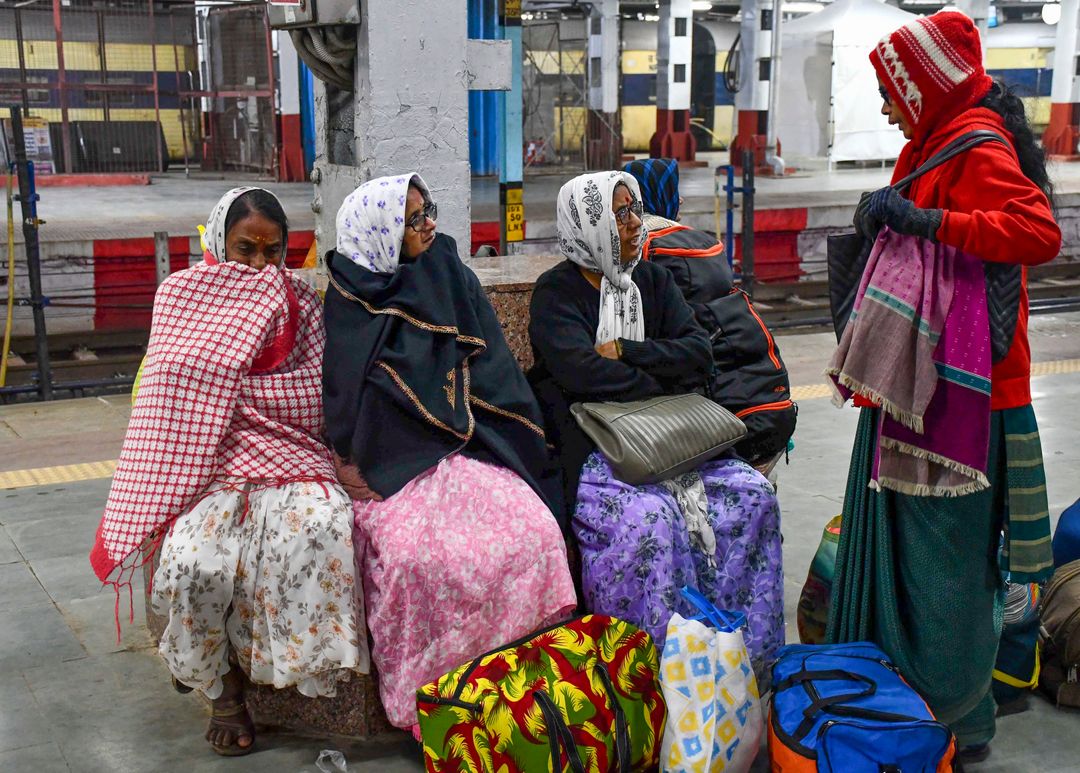
Prayagraj, March 3, 2025 – On this day in 1859, the 119-mile-long railway section between Allahabad (now Prayagraj) and Kanpur was fully opened, marking a significant milestone in India's railway history. The opening came barely two years after the tumultuous events of the Great Mutiny of 1857, which had impacted the original planning of the railway line.
The region of Prayagraj, which recently hosted the Maha Kumbh Mela from January 13 to February 26, has long been an integral part of India's railway network. The city, with its nine functional railway stations, continues to play a crucial role in ferrying millions of pilgrims during major religious events. This year, the bulk of the passenger traffic during the 45-day Maha Kumbh was handled by Prayagraj Junction, which had been historically known as Allahabad Junction, according to a senior railway official.
Indian Railways operated over 17,000 trains during the Maha Kumbh Mela to manage the heavy influx of devotees visiting the Triveni Sangam, the confluence of the Ganga, Yamuna, and the mythical Saraswati rivers. The authorities implemented several crowd management measures, ensuring the safety and smooth flow of passengers across stations.
A 'Sangam' of Railway Zones in Prayagraj
Prayagraj’s railway network is unique, as it is located at the intersection of three major railway zones. The North Central Railway (NCR) oversees Prayagraj Junction, Naini, Chheoki, and Subedarganj stations; the North Eastern Railway (NER) handles Prayag, Prayagraj Sangam, and Phapamau stations; while the Northern Railway (NR) operates Rambagh and Jhusi stations. The Prayagraj Sangam station, which is closest to the holy confluence, remained closed for passengers for most of February due to the religious significance of the Kumbh.
Shashi Kant Tripathi, Chief Public Relations Officer of the NCR Zone, noted that Prayagraj's strategic location has been instrumental in handling the massive crowds during major religious festivals. He explained, “To manage crowd control during the Kumbh, Prayagraj Sangam station is closed around auspicious bathing days as part of regular crowd management measures.”
Historic Stations: The Legacy of Allahabad and Kanpur
As Prayagraj celebrates 166 years since the completion of the Allahabad-Kanpur section, the history of its railway stations continues to captivate railway enthusiasts. Both the Allahabad and Kanpur stations, deeply tied to the region’s colonial past, have undergone extensive redevelopment while retaining their historical significance.
P.K. Mishra, former additional general manager of South Western Railway and a railway heritage expert, shared that while the full section was officially opened in March 1859, train services began operating partially as early as 1857. Both Allahabad and Kanpur stations suffered significant damage during the 1857 Mutiny and were rebuilt after 1858. Mishra also pointed out that while the old Allahabad station’s colonial-era architecture can be glimpsed in vintage photographs, the old Kanpur station is preserved as a heritage landmark and houses a training institute.
The iconic Kanpur Central station, now over 90 years old, continues to serve as a hub for rail operations. A historical tablet marking the distance from Calcutta to Cawnpore (Kanpur) still adorns the walls of the old station, providing a glimpse into the station’s rich history.
A Legacy of Engineering Feats
The railway line connecting Howrah to Delhi, laid by the East Indian Railway (EIR), is one of India's most remarkable civil and railway engineering accomplishments. Completed in phases from the early 1850s to the late 1860s, the line included the construction of major bridges over the Sone River at Koelwar and the Yamuna at Allahabad, along with the iconic bridge over the Yamuna. This section was initially opened for strategic military purposes before being made available for public use on March 3, 1859.
Prayagraj Railway Division: A Century of Service
Looking ahead, the Prayagraj Division, which was renamed in 2020, is set to celebrate its centenary in 2025. This marks another significant chapter in the ongoing transformation of the region's railway infrastructure.
To handle the large crowds during the Maha Kumbh, authorities implemented advanced crowd management systems at Prayagraj Junction. “We created holding areas and allowed controlled movement of passengers to platforms. Entry was made from the city side, and exit from the Civil Lines side to maintain smooth passenger flow,” explained Tripathi.
As the city continues to evolve, its railway system, which has been a key part of its history for over a century and a half, remains vital in connecting people to the spiritual and cultural heart of India.